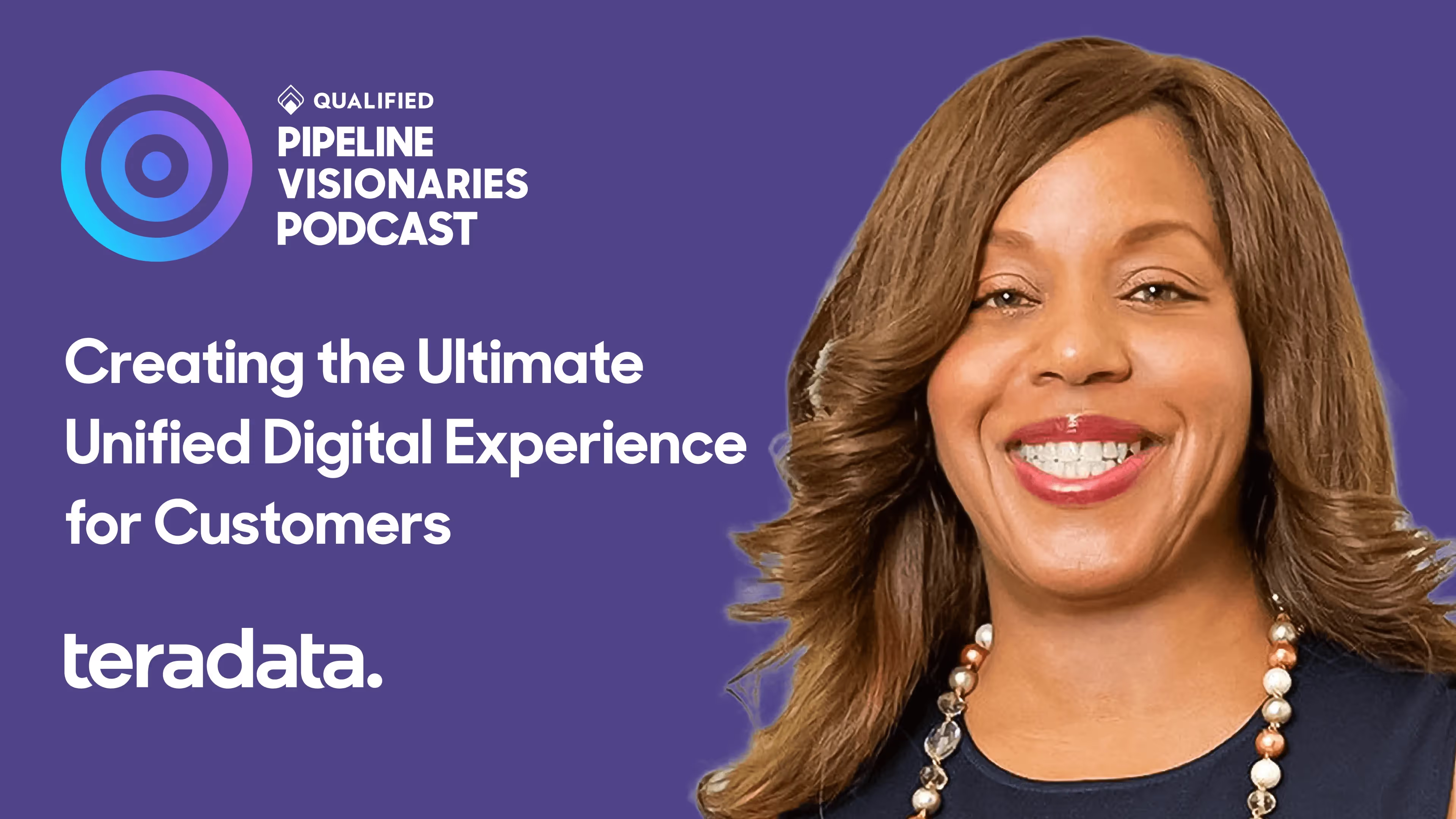Creating the Ultimate Unified Digital Experience for Customers
Jacqueline Woods, CMO at Teradata, shares with us her insights around utilizing data to create unified, frictionless customer experiences.




Jacqueline Woods, CMO at Teradata, shares with us her insights around utilizing data to create unified, frictionless customer experiences.

This episode features an interview with Jacqueline Woods, CMO at Teradata, the connected multi-cloud data platform for enterprise analytics, solving data challenges from start to scale.
In this episode, Jacqueline talks about the new age of personalization, why AI should not be held accountable, and reminds us that data in technology is only as good as the data put into it. Jacqueline also shares how data is like water and paints a picture of her vision for a unified, frictionless customer experience.
Key Takeaways:
Stay up to date with weekly drops of fresh B2B marketing and sales content.
Jacqueline Woods, CMO at Teradata, shares with us her insights around utilizing data to create unified, frictionless customer experiences.


This episode features an interview with Jacqueline Woods, CMO at Teradata, the connected multi-cloud data platform for enterprise analytics, solving data challenges from start to scale.
In this episode, Jacqueline talks about the new age of personalization, why AI should not be held accountable, and reminds us that data in technology is only as good as the data put into it. Jacqueline also shares how data is like water and paints a picture of her vision for a unified, frictionless customer experience.
Key Takeaways:
Stay up to date with weekly drops of fresh B2B marketing and sales content.
Jacqueline Woods, CMO at Teradata, shares with us her insights around utilizing data to create unified, frictionless customer experiences.


This episode features an interview with Jacqueline Woods, CMO at Teradata, the connected multi-cloud data platform for enterprise analytics, solving data challenges from start to scale.
In this episode, Jacqueline talks about the new age of personalization, why AI should not be held accountable, and reminds us that data in technology is only as good as the data put into it. Jacqueline also shares how data is like water and paints a picture of her vision for a unified, frictionless customer experience.
Key Takeaways:
Stay up to date with weekly drops of fresh B2B marketing and sales content.
Jacqueline Woods, CMO at Teradata, shares with us her insights around utilizing data to create unified, frictionless customer experiences.



This episode features an interview with Jacqueline Woods, CMO at Teradata, the connected multi-cloud data platform for enterprise analytics, solving data challenges from start to scale.
In this episode, Jacqueline talks about the new age of personalization, why AI should not be held accountable, and reminds us that data in technology is only as good as the data put into it. Jacqueline also shares how data is like water and paints a picture of her vision for a unified, frictionless customer experience.
Key Takeaways:
Discover how we can help you convert more prospects into pipeline–right from your website.